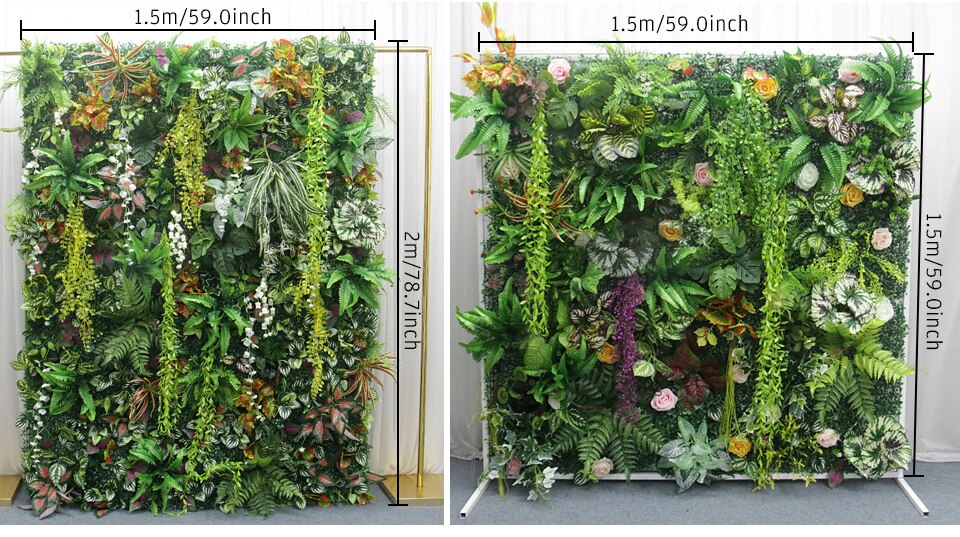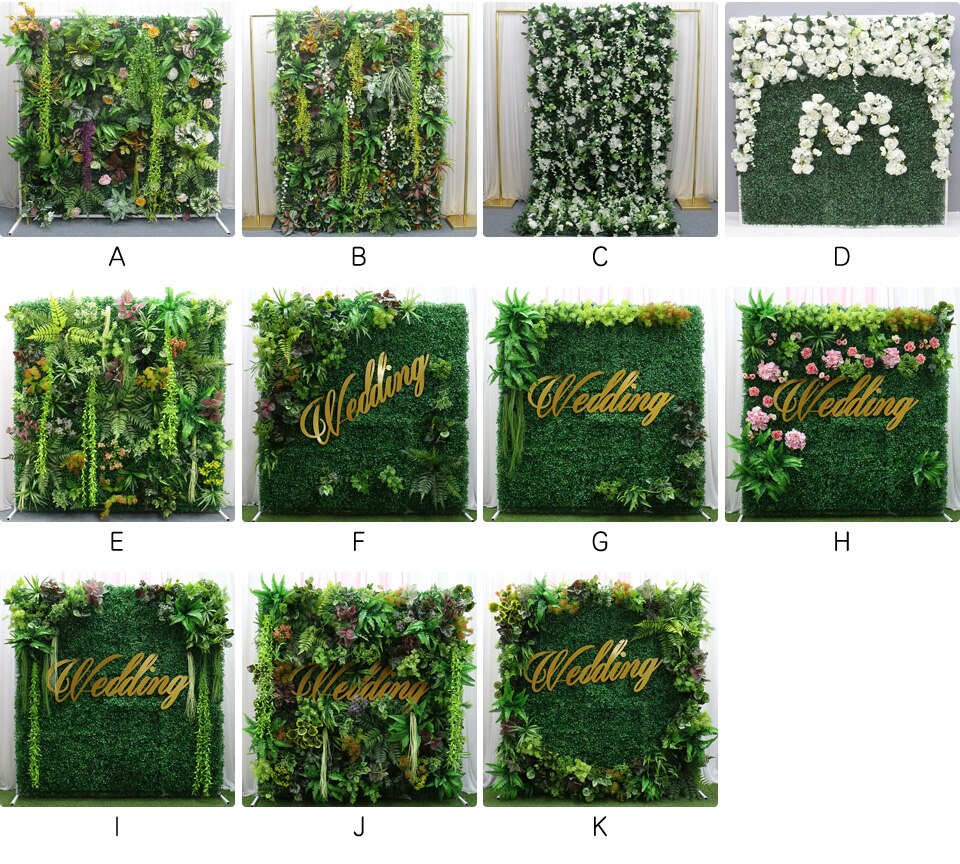how to build a wall for flower bed?
To build a wall for a flower bed, start by determining the desired size and shape of the bed. Then, gather the necessary materials such as bricks, stones, or wooden boards. Clear the area where the wall will be built and level the ground. Begin by laying a foundation of gravel or sand to provide stability. Place the first row of bricks or stones, ensuring they are level and aligned. Use a level and a rubber mallet to adjust as needed. Continue adding rows, staggering the joints for stability. If using wooden boards, secure them together with screws or nails. Fill the flower bed with soil and plant your desired flowers or plants. Finally, water the plants and maintain the flower bed regularly to keep it healthy and beautiful.
1、 Choosing the right materials for a flower bed wall
Choosing the right materials for a flower bed wall is crucial in creating a sturdy and visually appealing structure. There are several options available, each with its own advantages and considerations. Here is a guide on how to build a wall for a flower bed, focusing on material selection.
One popular choice is using bricks or concrete blocks. These materials provide durability and a classic look. They are relatively easy to work with and can be stacked or mortared together. However, they can be heavy and may require a solid foundation to prevent shifting over time.
Another option is using natural stone, such as limestone or sandstone. These materials offer a more rustic and organic appearance. Natural stone walls can be built using dry stacking techniques or with mortar for added stability. However, they can be more expensive and time-consuming to install compared to other materials.
Wood is another versatile material for flower bed walls. It can be used to create a more natural and rustic look. Pressure-treated lumber or cedar are popular choices due to their resistance to rot and insects. However, wood may require regular maintenance and can deteriorate over time.
Additionally, there are newer materials available, such as interlocking concrete blocks or modular systems made from recycled materials. These options offer ease of installation and flexibility in design. They are often lightweight and can be easily rearranged or expanded as needed.
When choosing the right material, consider factors such as cost, durability, maintenance requirements, and aesthetic appeal. It is also important to check local building codes and regulations before starting any construction project.
In conclusion, selecting the appropriate material for a flower bed wall is essential for both functionality and aesthetics. Consider the pros and cons of each option, and choose the one that best suits your needs and preferences.

2、 Preparing the ground for building a flower bed wall
Preparing the ground for building a flower bed wall is an essential step to ensure the stability and longevity of the structure. Here are the steps to follow:
1. Choose the location: Select a suitable spot for your flower bed wall, considering factors such as sunlight exposure and drainage.
2. Clear the area: Remove any existing vegetation, rocks, or debris from the ground. This will provide a clean surface for building the wall.
3. Mark the boundaries: Use stakes and string to mark the boundaries of the flower bed wall. This will help you visualize the shape and size of the structure.
4. Excavate the area: Dig a trench along the marked boundaries, ensuring it is deep enough to accommodate the desired height of the wall. The trench should be wider than the planned width of the wall to allow for proper stability.
5. Level the ground: Use a level to ensure the bottom of the trench is even. This will help prevent any unevenness in the wall.
6. Add a base layer: Fill the trench with a layer of gravel or crushed stone. This will provide a stable foundation for the wall and aid in drainage.
7. Install a retaining wall system: Depending on your preference and budget, choose a suitable retaining wall system such as concrete blocks, bricks, or natural stone. Follow the manufacturer's instructions to properly install the chosen material.
8. Backfill and compact: Fill the space behind the wall with soil, ensuring it is compacted at regular intervals. This will provide additional stability to the structure.
9. Add plants: Once the wall is complete, fill the flower bed with soil and plant your desired flowers or plants.
It is important to note that the latest point of view emphasizes the use of sustainable materials and practices. Consider using eco-friendly materials such as recycled concrete blocks or natural stone sourced from local suppliers. Additionally, incorporating native plants in your flower bed can promote biodiversity and support local ecosystems.

3、 Building a sturdy foundation for the flower bed wall
Building a sturdy foundation for a flower bed wall is essential to ensure its longevity and stability. Here is a step-by-step guide on how to build a wall for a flower bed:
1. Plan and design: Determine the size and shape of your flower bed wall. Consider the materials you want to use, such as bricks, stones, or concrete blocks. Sketch out the design and calculate the number of materials needed.
2. Prepare the area: Clear the area where the flower bed wall will be constructed. Remove any grass, weeds, or debris. Level the ground using a shovel or rake.
3. Excavate the foundation: Dig a trench along the planned outline of the flower bed wall. The trench should be about 6-8 inches deep and wide enough to accommodate the width of the wall material.
4. Add a layer of gravel: Fill the trench with a layer of gravel. This will provide drainage and prevent water from accumulating behind the wall. Compact the gravel using a tamper or the back of a shovel.
5. Lay the first course: Start laying the first row of wall material on top of the gravel. Use a level to ensure it is straight and level. If using bricks or stones, apply mortar to the bottom of each piece before placing it in the trench.
6. Continue building: Stack the subsequent rows of wall material, making sure to stagger the joints for added stability. Use a level to check the alignment of each piece.
7. Backfill and compact: Once the wall is complete, backfill the space behind it with soil. Compact the soil using a tamper to prevent settling.
8. Finish the top: If desired, add a capstone or coping to the top of the wall for a finished look. Secure it in place using mortar.
9. Maintain the wall: Regularly inspect the flower bed wall for any signs of damage or shifting. Repair any cracks or loose stones promptly to maintain its stability.
It is important to note that building codes and regulations may vary in different areas. It is advisable to consult with local authorities or professionals to ensure compliance with any specific requirements.
In recent years, there has been a growing interest in using sustainable and eco-friendly materials for construction projects. Consider exploring options such as recycled bricks or stones, reclaimed wood, or even living walls made of plants. These alternatives not only add a unique aesthetic to your flower bed wall but also contribute to environmental conservation.

4、 Constructing the wall using proper techniques and measurements
To build a wall for a flower bed, it is important to follow proper techniques and measurements to ensure stability and longevity. Here is a step-by-step guide on how to construct a wall for a flower bed:
1. Plan and design: Determine the size and shape of the flower bed wall. Consider the height and width of the wall, as well as the materials you will use. Common materials include bricks, stones, or concrete blocks.
2. Prepare the area: Clear the area where the wall will be built. Remove any grass, weeds, or debris. Level the ground and ensure it is compacted.
3. Lay the foundation: Dig a trench along the planned wall line. The trench should be about 6-8 inches deep and wide enough to accommodate the first row of bricks or stones. Fill the trench with a layer of gravel or crushed stone for drainage.
4. Lay the first row: Start by placing the first row of bricks or stones in the trench. Use a level to ensure they are straight and even. Apply mortar or a suitable adhesive between the bricks or stones to secure them in place.
5. Build subsequent rows: Continue laying bricks or stones, staggering the joints for stability. Use a level to check the alignment of each row. Apply mortar or adhesive as needed.
6. Add drainage: To prevent water buildup behind the wall, install drainage pipes or weep holes at regular intervals. These will allow water to escape and prevent pressure on the wall.
7. Finish the top: Once the desired height is reached, finish the top of the wall with capstones or a suitable finishing material. This will provide a clean and polished look.
8. Maintain the wall: Regularly inspect the wall for any signs of damage or shifting. Repair any cracks or loose stones promptly to maintain the integrity of the wall.
It is important to note that building codes and regulations may vary in different areas, so it is advisable to consult with local authorities or professionals for specific guidelines. Additionally, consider using environmentally friendly materials and techniques, such as using reclaimed or recycled materials, to reduce the environmental impact of your project.











































Leave your comment